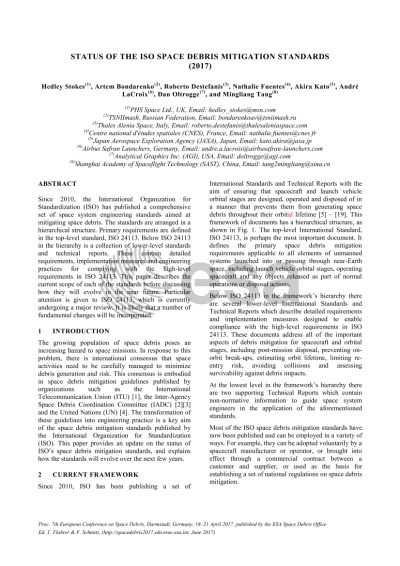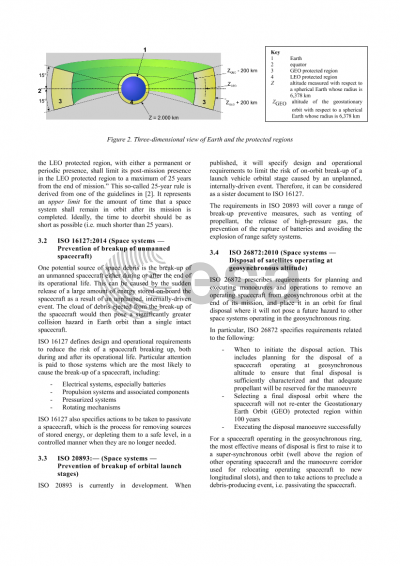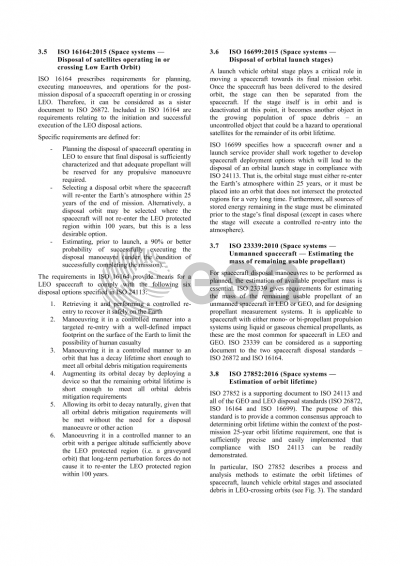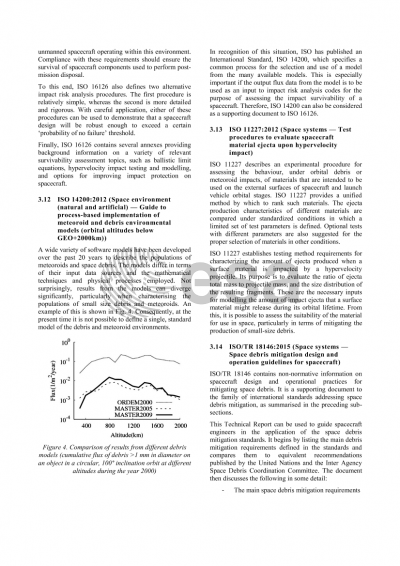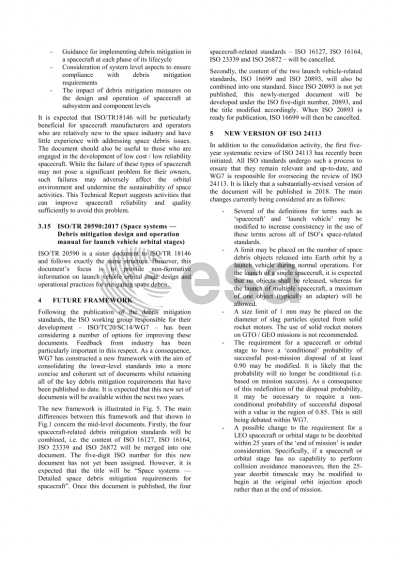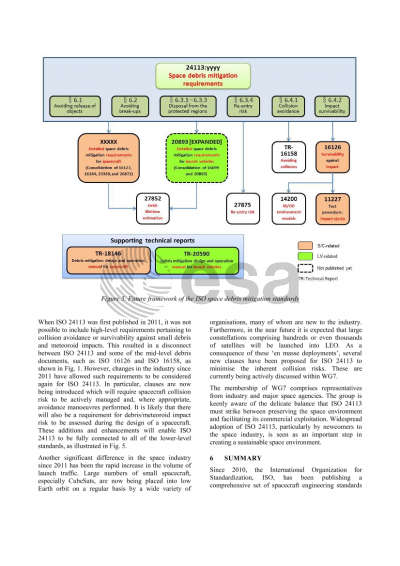Document details

Abstract
This paper will provide an update on the status of ISO’s space debris mitigation standards.
Since 2010 the International Organization for Standardization (ISO) has been publishing a set of International Standards and Technical Reports with the aim of ensuring that spacecraft and launch vehicle orbital stages are designed, operated and disposed of in a manner that prevents them from generating space debris throughout their orbit lifetime. This framework of documents has a hierarchical structure. The top-level standard, ISO 24113, is perhaps the most important document. It defines the primary space debris mitigation requirements applicable to all elements of unmanned systems launched into or passing through near-Earth space, including launch vehicle orbital stages, operating spacecraft and any objects released as part of normal operations or disposal actions.
Below ISO 24113 in the framework’s hierarchy there are 12 mid-level standards which describe detailed requirements and implementation measures designed to enable compliance with the high-level requirements in ISO 24113. These documents address all of the important aspects of debris mitigation for spacecraft and orbital stages, including post-mission disposal, preventing on-orbit break-ups, estimating orbit lifetime, limiting re-entry risk, and assessing survivability against debris impacts.
At the lowest level in the framework’s hierarchy there are three Technical Reports which contain non-normative information. Two of the reports are intended to guide spacecraft engineers in the application of the aforementioned standards, whilst the remaining report describes some recognised techniques for collision avoidance.
Most of the ISO space debris mitigation standards have now been published and can be used in a variety of ways. For example, they can be adopted voluntarily by a spacecraft manufacturer or operator, or be brought into effect through a commercial contract between a customer and supplier, or be used as the basis for establishing a set of national regulations on space debris mitigation.
Since publication, the ISO working group responsible for developing most of the debris mitigation standards – ISO/TC20/SC14/WG7 – has been considering a number of options for improving the usability of the standards. Feedback from industry has been particularly important in this respect. As a consequence, WG7 has constructed a new framework with the aim of consolidating the mid-level standards into a smaller, more coherent set of documents whilst retaining all of the key debris mitigation requirements that have been published to date. It is expected that this new set of documents will be available within the next two years.
In addition to the consolidation activity, the first five-year systematic review of ISO 24113 has recently been initiated. All ISO standards undergo such a process to ensure that they remain relevant and up-to-date. WG7 is responsible for overseeing the review of ISO 24113, and it is likely that a substantially revised version of the document will be published in 2018.
This paper will also explain the debris mitigation standards consolidation activity and discuss the proposed changes to ISO 24113.
Preview
